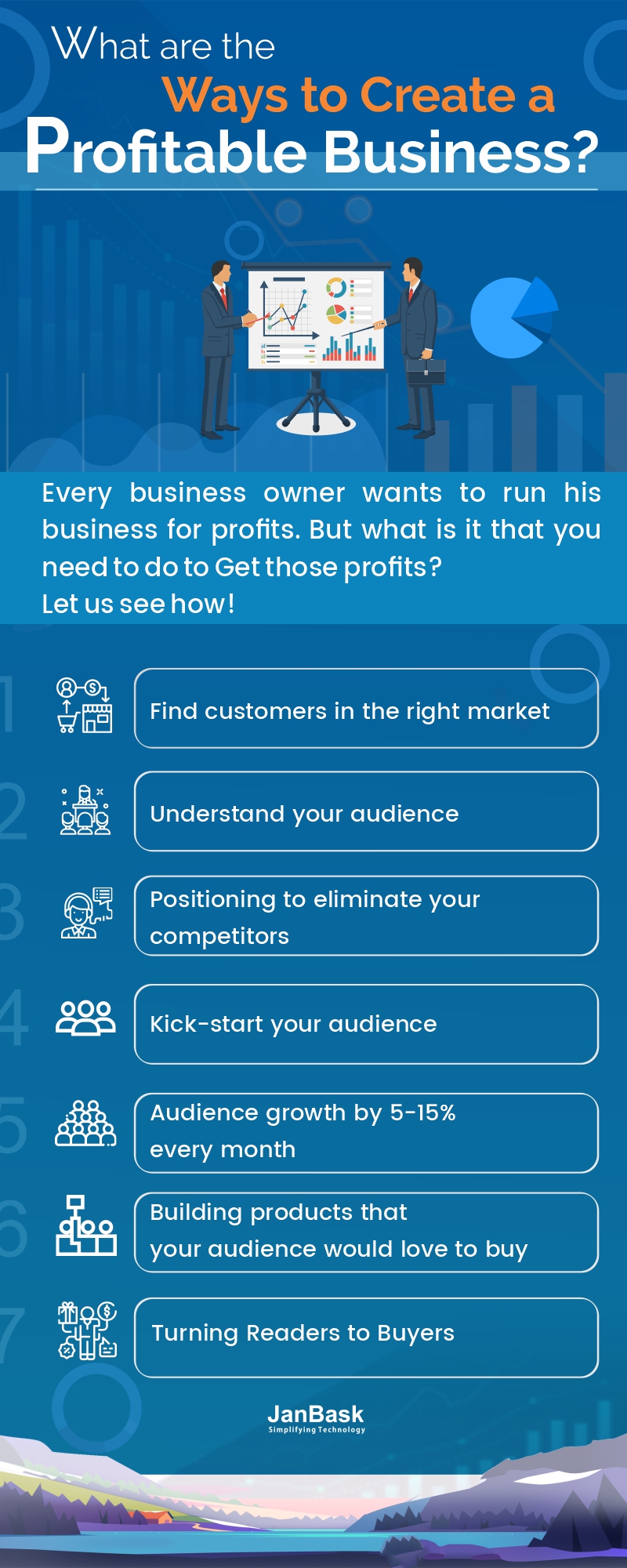
Everyone wants to run a profitable business and wants to succeed in it but there are a few points to take care about before you start up a new business. Building an audience before launching new product is very important aspect that almost all companies follow today. There was a time when people believed that “If you build it, they will come”, but it is not true today. The traditional method of businesses involved building the product first and then finding the audience or customers for it. Revenue starts pouring in quickly in this case, but one can have poor product-market fit and create a product that not many people are interested in buying. The second method is not that common but is gaining popularity over the years. It is finding the customers first and building the product related to it.
In this case content marketing holds a very important role as it can be used to know the problems that the customers have to face with the product and that can be used to build a better relationship with the audience before actually launching the product. Though this second option can delay the revenues but it is a safer option. So, below are the steps that will help one to build an audience with content and then create a successful product for them.

Step 1: Find customers in the right market
One needs to follow a methodical approach to find an audience that may like the product and then build content that the audience will appreciate. It is best to look for audience that you care about because you are going to create high value content and tools for this particular audience for a long time and will keep you motivated to work and give you profitable future. E.g., if one loves marketing and can share marketing advice for marketers, entrepreneurs, and small business owners of all types, then it will be motivating for him to continue to produce great content even without earning much.
Be as specific as possible to create a strong hold over that particular audience and you can go on without getting any returns. But one needs to be careful while building an audience as they should not be those who don’t want to buy a product. E.g., one should prefer choosing an audience of home decorators rather than going for minimalists, as the home decorators will be constantly looking to buy new cool things and you can sell your products easily. Validation is also done commonly to determine whether your audience is already buying a decent number of products from your competitors and you can build a product that is head and shoulders above the competition.
There are three types of audiences one needs to validate. It can be audiences interested in physical products like swimming equipments, informational products like e-books and online courses, etc., and the third category is of software products like various apps and tools. After validation, narrow down your product list according to the significant demand by the audience and work towards building the product.
Step 2: Understand your audience
The audience comes before the product and understanding them becomes all the more important, which can be done using demographic and psychographic information. Demographics are statistics that are used to describe a person or group on the basis of location, age, gender, income, educational level, religion, ethnicity, marital status, number of children etc. The goal of a starter is to define any relevant demographics for their audience and evaluate the parameters relevant to the audience. Alexa, Adwords Planner etc., are few of the sites that can be used to study demographics. Psychographics is the data about the thought process and belief of the audience, e.g., what are the hobbies of the audience, why are they interested in it, they would prefer video, audio, text etc. To study this entire information one should create a concise description and create a profile of your target audience.
Step 3: Positioning to eliminate your competitors
Positioning is a way to make your audience associate with you and your product depending on their interest. E.g., if one wants to write on social media networking sites, then there are already many favorite sites available on the internet like Pinterest, Quick Sprout etc., but many people might not like their content as they are elaborate and not specific. One can take advantage of this and create content that is short, written in points and focused on specific topics, like Pinterest Marketing only. With this, your audience will feel that the writer can read his/her mind completely and would love to follow you. One should also identify the differentiators, competitors and plot their competitors on a matrix and see how one can catch hold of their audience by writing differently than their competitors.
Step 4: Kick-start your audience
Initially, one should have at-least a few hundred readers who follow their posts. Then the readers can themselves promote the content on social networking sites like Facebook etc. and help your audience grow. To get the initial minimal-100 audience one should follow High Growth tactics, like Guest-posting and Paid Advertising.
Step 5: Audience growth by 5-15% every month
If one aims for audience growth of 5-15% initially then it is estimated that there will be around 5000 readers in about 2 years. Now, to achieve such targets, we should first have a bank of great ideas for our audience, to build lot of content for our audience. One should have lot of ideas that are sufficient to keep the audience occupied at least for initial 2 months. Secondly, it is important to create a sustainable content schedule like initially one can publish content once a week, and then gradually do aggressive posting like everyday posting, but one must be consistent and maintain a fixed schedule to catch hold of its audience. Finally, one can stay in touch with the audience through e-mail marketing or through social networking sites, so that the audience gets a regular reminder of your contents.
Step 6: Building products that your audience would love to buy
After having at-least a few thousand subscribers who love your content, use them to generate product ideas that they will love. Since it’s been quite long that you have been in touch of your audience, and now you know their interests too, it is sure that you can build better products than your competitors. Also, as you have a great relationship bond with them, they are sure to give a chance and will give you a valuable feedback. The first step is to pitch product ideas to your subscriber list. Make sure you don’t send the ideas to the entire list, but to only few 50 out of them. By taking their feedback and views on the product, you can move forward with building your product and then share it with more subscribers. The best time is if you also get pre-orders for your product. Then, it is also important to survey your readers as it will give you insight to biggest problems faced by your readers. E.g., if someone says that I am ready to pay for a course that teaches how to make videos online, you can use it as a product building idea.
Step 7: Turning Readers to Buyers
After the product is ready, one simply has to sell it to their audience. Since you have already built a relationship with your audience, you can wait for the sales to grow and reach peaks. One can also use webinars to sell expensive products. The basic idea is to teach the audience about something that’s related to your product, with some sort of offer.
Conclusion
By building an audience first and then making the product that they are interested in helps in creating a better customer for your product. The chances of failure in the business are very less while getting great conversion rates and instant sales on your products.
Stop, read and acquire deep insights into complex issues
© 2025 Copyright - JanBask.com | Designed by - JanBask Digital Design
Write a Comment